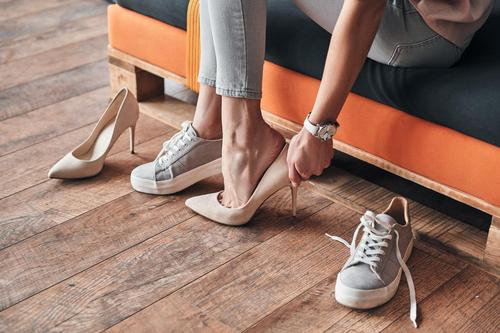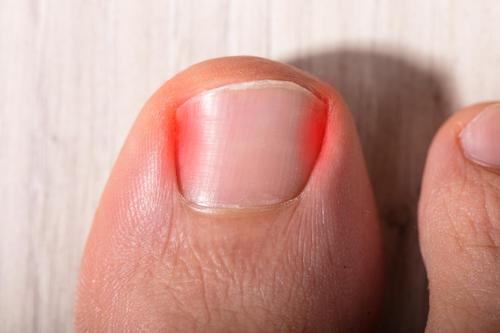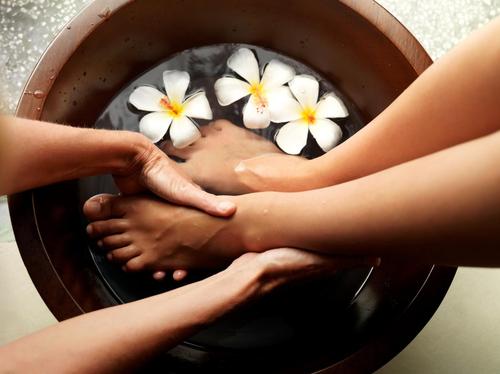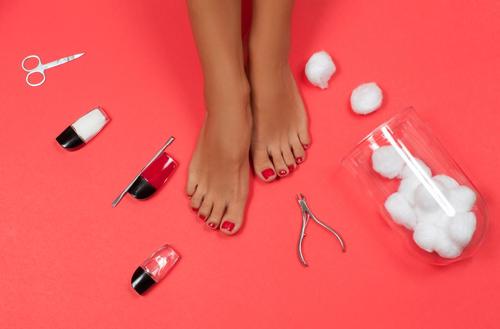Treating Ingrown Nails Without Surgery
Oct 17, 2018 by apost team
Every step hurts, just touching the toes hurts. Anyone who has ever suffered from an ingrown nail knows this. Your own doctoring around often only makes things worse and if the wound then becomes inflamed, in the end often only one surgical intervention remains as a solution. In order to prevent an ingrown nail, you should act beforehand.
 istockphotos.com/kbwills
istockphotos.com/kbwills
There are several reasons for an ingrown nail. In addition to genetic factors, these are usually things that can easily be prevented in advance.

apost.com
Wrong Footwear
 istockphotos.com/g-stockstudio
istockphotos.com/g-stockstudio
If a shoe is too tight, the toes can get squeezed together. Pressure is exerted on the nail, which can then slide under the skin of the nail wall. This allows the nail to grow into the skin over time.
Wrong Nail Care
 istockphotos.com/rdonar
istockphotos.com/rdonar
While fingernails should be cut oval, this is the wrong step for toenails. These should always be cut straight. If you cut them sideways, they can grow in the wrong direction and puncture the skin.
Injury
 istockphotos.com/AndreyPopov
istockphotos.com/AndreyPopov
You bent your toe the wrong way or stubbed your foot on something. Nail injuries can also cause this ingrowth. The cuticle can grow together incorrectly after an injury and push itself under the skin.
Diabetes
 istockphotos.com/vgajic
istockphotos.com/vgajic
Affected persons suffer particularly frequently from ingrown nails and inflammations. Even a small injury to the nail or skin can lead to severe discomfort. If you suffer from diabetes, you should take particular care with your nails. It can help to visit a pedicurist.
Symptoms Of An Ingrown Toenail
An ingrown nail quickly makes itself known. The nail bed starts to emit moderate to severe pain, the toe becomes red, throbs and swells. Granulation tissue and pus can also occur.
This Is What You Can Do Now
1. Let The Feet Soak
 istockphotos.com/Jacob Wackerhausen
istockphotos.com/Jacob Wackerhausen
The skin must now become smooth and supple. Foot baths are the best for this. They can also prevent an ingrown nail. Experts recommend two to four foot baths a week. Just keep your feet in warm water for 20 minutes.
Salt and dissolved curd soap makes the skin even softer. Chamomile is particularly effective against swelling and inflammation.
2. Cotton Ball
 istockphotos.com/lisak
istockphotos.com/lisak
Once the affected toe is softened, you can help yourself with a piece of cotton wool. Roll a small piece together and put it very carefully between the nail and the underlying skin. This raises the nai up slowlyl.
If it hurts too much, you should see a doctor. The cotton should remain in place as long as possible so that the nail can grow out on its own. Renew the cotton wool after the next footbath
3. Other Remedies
 istockphotos.com/mariusFM77
istockphotos.com/mariusFM77
In addition, apple cider vinegar (rub the affected place with a soaked cotton ball), eucalyptus oil, blistering ointments and lemons can help. Rub the affected place carefully with a thin slice of it, or let it work over night while a bandage holds it in place.
As a general rule, your feet need rest and space in your shoes during the treatment. Sandals or barefoot is the best now. This applies not only to the time during the treatment, but also to the time afterwards.
Have you also suffered from an ingrown nail before? What helped you? Tell us about your experience, we are curious. And show the article to your friends, too.
Our contents are created to the best of our knowledge, but are of a general nature and cannot replace an individual consultation with your doctor in any way. Your health is important to us!